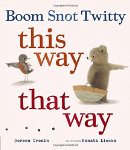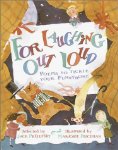I am very lucky to have not one but two dogs in my life, and since I work at home they are my constant companions. They don't mind when I read reviews and stories out loud. In fact they are wonderful listeners! They don't mind when I mutter and fuss when things are not going well, and will press their noses into my hand when they feel that I need a little attention. They are wonderful work mates, which is why I was immediately drawn to today's picture book. Anyone who has a dog in their life is lucky, but I think we authors really need our dogs.
 A Lucky Author has a dog
A Lucky Author has a dog
 A Lucky Author has a dog
A Lucky Author has a dog
Mary Lyn Ray
Illustrated by Steven Henry
Picture Book
For ages 5 to 7
Scholastic, 2015, 978-0-545-51876-5
Every morning a dog up wakes its person with a kiss. The
dog’s person is a little different from other people because she is an author,
and authors tend to stay at home to work, which means that the dog has a
companion all day long. The dog is therefore very lucky indeed.
The interesting
thing is that the dog is not the only one who is lucky. The author is lucky too
because she has the dog. Dogs are wonderful partners who understand that what
the author is doing is important even if the dog really “isn’t exactly sure
what an author does.” The dog is an “encouraging friend” who is always there,
and the dog knows when it is time for the author to take a break. Walks are
good for the dog, but they are also good for the author as well because new
sights, smells and sounds help feed a mind that is stuck and frustrated. In
fact, a dog can really show an author “how to look and listen the way a dog
does,” which can make all the difference in the world when you are a wordsmith
and storyteller.
In this unique
picture book we find out what the life of an author is like, and we also come
to appreciate that being an author’s dog is not a job to be taken lightly. As
the narrative carries us through the day we see that the relationship between
the author and her friend is special because both partners know that they are
lucky to have each other.






